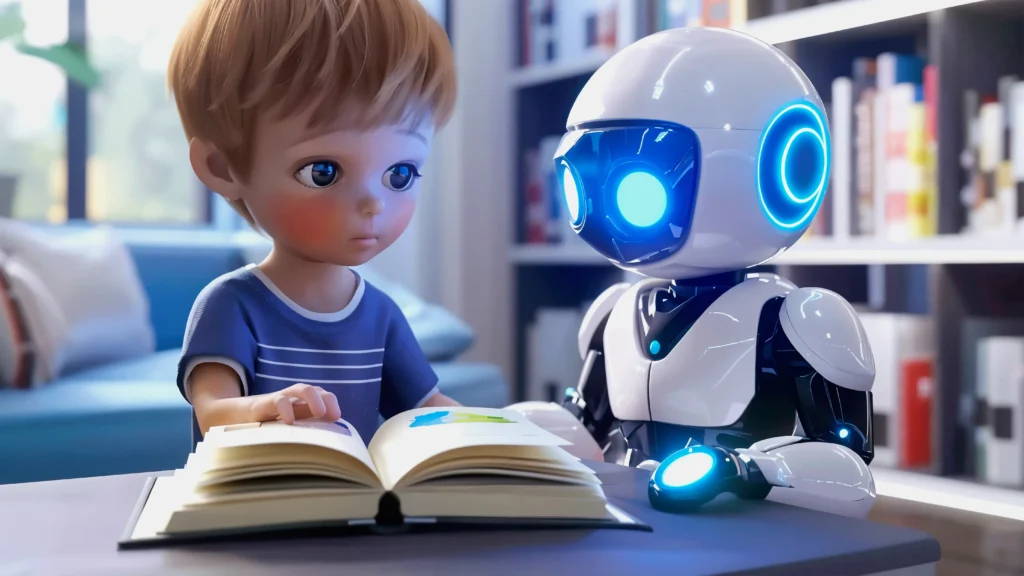Technology has become an inseparable part of our children’s world. From educational apps to interactive games, digital tools are shaping how kids learn and play. Among these tools, ChatGPT, an AI-powered chatbot, is gaining attention for its potential to support learning, creativity, and even entertainment. But like any tool, it comes with both benefits and risks. Parents must understand how ChatGPT can impact their child’s development and what steps they can take to ensure safe and meaningful use.
In this blog, we’ll explore the benefits of ChatGPT for kids, possible risks, and practical tips for parents to create a healthy balance between technology and real-life interactions.
What is ChatGPT?
ChatGPT is an artificial intelligence (AI) chatbot developed by OpenAI. It uses natural language processing to understand questions and provide human-like responses. In simple terms, it’s like talking to a very knowledgeable assistant who can answer questions, explain concepts, and even create stories or games.
For kids, ChatGPT can be a digital learning companion. Whether it’s helping with homework, generating ideas for projects, or sparking creative writing, ChatGPT can make learning more interactive and fun. But without proper guidance, kids may also misuse it or come across information that’s not age-appropriate.
Benefits of ChatGPT for Kids
1. Enhances Learning and Curiosity:
Kids are naturally curious. ChatGPT can answer endless “why” and “how” questions in a way that feels conversational. For example, if your child asks, “Why do stars twinkle?” ChatGPT can explain it simply, sparking further curiosity. Unlike a textbook, it feels like having a patient teacher who never gets tired of answering.
2. Boosts Creativity:
Children can use ChatGPT to write stories, poems, or even create imaginary worlds. For example, if a child says, “Tell me a story about a dragon who loves painting,” ChatGPT can instantly create a fun and engaging narrative. This helps boost imagination and storytelling skills.
3. Supports Homework and School Projects:
From explaining math concepts to summarizing historical events, ChatGPT can act as a study buddy. It provides quick explanations that kids can understand, making homework less overwhelming. However, parents should ensure kids use it for learning—not just copying answers.
4. Encourages Safe Online Engagement:
Unlike browsing random websites, using ChatGPT can be a safer way for kids to explore topics—provided parental supervision is in place. Since it doesn’t rely on external links, the chances of encountering unsafe websites are reduced.
5. Improves Communication Skills:
By interacting with ChatGPT, kids practice forming questions and expressing themselves clearly. Over time, this can improve their language skills and vocabulary.

Risks of ChatGPT for Kids
1. Exposure to Inaccurate Information:
While ChatGPT is powerful, it’s not perfect. Sometimes, it may provide incorrect or outdated information, which could confuse young learners. Kids may not always know how to fact-check what they read.
2. Overreliance on AI:
If children use ChatGPT too often for schoolwork, they may become dependent on it instead of developing critical thinking and problem-solving skills. For example, instead of working through a math problem, a child might just ask ChatGPT for the answer.
3. Privacy Concerns:
Like any online tool, using ChatGPT raises privacy issues. Kids may unknowingly share personal information, which parents should discourage. It’s important to remind children never to input names, addresses, or other sensitive data.
4. Screen Time Overload:
Adding ChatGPT to a child’s daily routine can increase overall screen time. Excessive use of screens has been linked to issues like poor sleep, reduced physical activity, and decreased face-to-face interactions.
5. Lack of Human Connection:
While ChatGPT can simulate conversation, it cannot replace the empathy, warmth, and understanding of real human interaction. Kids still need meaningful discussions with parents, teachers, and peers.
Smart Tips for Parents
1. Set Clear Boundaries:
Decide when and how your child can use ChatGPT. For example, allow it during study hours but limit it for casual use. Encourage children first to try solving problems on their own before asking ChatGPT.
2. Supervise Usage:
Be present when your child uses ChatGPT. This helps you monitor what they’re asking and how they’re interpreting responses. You can guide them if the answers seem inaccurate or too advanced.
3. Teach Fact-Checking Skills:
Encourage kids to verify information they get from ChatGPT. For example, if ChatGPT provides a science fact, ask your child to cross-check it in a book or a trusted website. This builds critical thinking.
4. Promote Creativity Over Shortcuts:
Encourage your child to use ChatGPT for brainstorming ideas rather than simply copying responses. For instance, they can ask ChatGPT for story prompts but then write the story themselves.
5. Balance Screen and Offline Activities:
Ensure ChatGPT doesn’t replace real-world play, reading, or outdoor activities. A healthy mix of tech and offline experiences supports better development.
6. Educate About Online Safety:
Explain the importance of not sharing personal information with ChatGPT or any online tool. Set simple rules such as, “Only ask questions about school or fun facts, not personal details.”
Final Thoughts
ChatGPT for kids can be a powerful tool for learning and creativity when used wisely. It opens doors to knowledge, sparks imagination, and provides educational support in a fun, interactive way. But without guidance, it can also lead to overreliance, misinformation, and increased screen time.
Parents play the most important role here. By setting boundaries, supervising use, and teaching critical thinking, they can ensure that ChatGPT becomes a helpful companion rather than a harmful distraction. Like any tool, its impact depends on how it’s used—and with smart parenting, it can become a positive force in your child’s digital journey.
FAQs:
1. Is ChatGPT safe for children?
Yes, but only under parental supervision. Parents should guide kids and set boundaries for safe use.
2. Can ChatGPT replace teachers or tutors?
No. ChatGPT can support learning, but cannot replace the depth, empathy, and guidance that teachers and tutors provide.
3. At what age can kids start using ChatGPT?
It depends on the child’s maturity. Generally, kids above 10 may benefit more, but parental supervision is essential at any age.
4. Does ChatGPT encourage laziness in kids?
It can if misused. Encourage children to use it for explanations and creativity, not just copying answers.
5. How can parents make ChatGPT more educational?
By encouraging kids to ask learning-focused questions, using it for research support, and combining it with offline resources.


4 Responses
Basic strategy really shines when you understand probabilities – it’s about making informed decisions, not just luck! Seeing platforms like ss777 download embrace easy payment options (GCash, PayMaya!) makes getting into the game so much simpler for Filipino players. It’s like unlocking a new level of convenience!
Absolutely agree with you! 🎯 Basic strategy is all about smart choices backed by probabilities, and that’s where the real edge comes in. And you’re right—having seamless payment options like GCash and PayMaya really does make the whole experience a lot more convenient. Great point!
Only a smiling visitor here to share the love (:, btw outstanding layout. “Make the most of your regrets… . To regret deeply is to live afresh.” by Henry David Thoreau.
That’s such a lovely comment — thank you! 😊 I really like that Thoreau quote too; it’s such a great reminder about growth and perspective. Glad you stopped by and appreciated the layout!